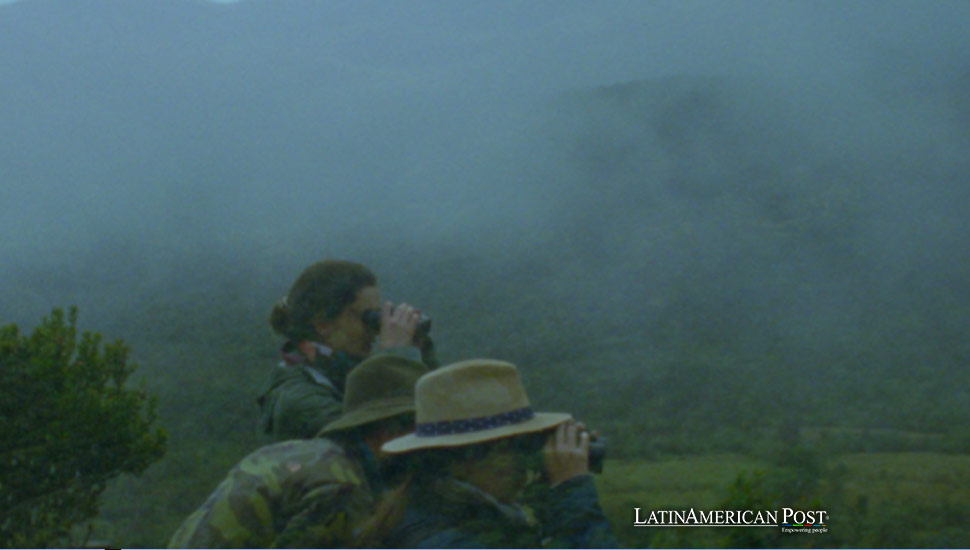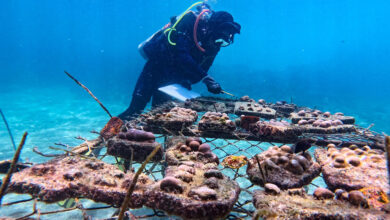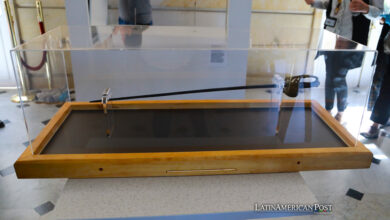Bolívar’s Legacy and Nature’s Resilience: Latin America Explored in New Movie

Pablo Álvarez Mesa’s film “La Laguna del Soldado” explores how the harsh beauty of the páramo in Colombia weaves together human history and the natural world, reflecting on past conflicts and future hopes.
In 1819, during his campaign against Spanish colonial rule, Simón Bolívar led his troops across the harsh, high-altitude grasslands of the páramo in Colombia. The frigid temperatures and rough terrain proved too much for his ill-prepared soldiers, most of whom perished in the unforgiving environment. Their bodies were cast into a lagoon, where they remain to this day. This stunning yet inhospitable landscape forms the backdrop of Pablo Álvarez Mesa’s film, “La Laguna del Soldado,” a poetic meditation on how nature absorbs and preserves human history.
Álvarez Mesa’s ‘La Laguna del Soldado’ takes a unique narrative approach, eschewing traditional characters and plot. Instead, the film weaves a captivating story through the lens of the páramo, using voice-over narrations from locals and scientists to create a contemplative atmosphere. This experimental structure allows the film to subtly intertwine environmental and social narratives of the Colombian Andes, offering profound reflections on the interconnectedness of nature and human existence.
The Frailejón: A Symbol of Nature’s Role
One of the central elements of the film is the frailejón, a unique shrub resembling a giant artichoke or succulent. Long, lingering shots of the plant are accompanied by scientific explanations of its crucial role in the páramo’s ecosystem. Belonging to the same family as the sunflower, the frailejón captures moisture from the air and releases it into the soil through its roots, contributing to the water cycle and eventually giving rise to rivers. “These creeks connect us with the Orinoco, with the Eastern Plains,” a soft-spoken voice explains, emphasizing the plant’s significance beyond the páramo.
The social reality of the páramo, however, has been far less cohesive. For centuries, the frailejón has been known by a different name to the Muiscas, the Indigenous people of the region, who associate it with the sun. This connection was lost when the Spanish colonists renamed the plant. Until the 2016 peace accord between the FARC guerrilla group and the Colombian government, large parts of the páramo were inaccessible due to conflict, and even now, threats of renewed violence persist. This fragmented social landscape contrasts sharply with the unified natural ecosystem the frailejón represents.
Bolívar’s Legacy and the Quest for Unity
The history of the páramo is deeply intertwined with the legacy of Simón Bolívar. Despite the ultimate success of his independence campaign, Bolívar’s dream of a unified Latin America never materialized. The film parallels Bolívar’s failed integration projects and the continued social fragmentation in the páramo. Indigenous communities, Spanish colonists, and modern armed forces represent centuries of clashing histories, all converging in this timeless landscape.
“La Laguna del Soldado” repeatedly emphasizes the continuity of nature amid human upheavals. The film showcases the páramo’s bats, minerals, and fog, using these natural elements to blur the lines between past and present. This approach is particularly poignant for a country like Colombia, which has endured decades of conflict and is now striving for lasting peace. Bolívar, a symbol of enduring hope, becomes a recurring motif in the film, reminding viewers of the ongoing struggle for unity and stability.
The film opens with a recitation of Bolívar’s enigmatic poem, “My Delirium on Chimborazo,” reflecting humanity’s place in the cosmos. “Feverish delirium engulfed my mind. I felt as if inflamed by strange, supernatural fire. The God of Colombia had taken possession of me,” Bolívar wrote. Álvarez Mesa uses this narrative to underscore the idea that even Bolívar, a larger-than-life figure, acknowledged the supremacy of the natural world. The páramo, as an enduring archive, continues to exist with or without human presence.
The Páramo’s Role in Modern Colombia
‘La Laguna del Soldado’ goes beyond the páramo’s historical significance, delving into its contemporary relevance. The páramo, a historical site, is also a vital ecological region that plays a crucial role in Colombia’s water supply and biodiversity. The film uses the frailejón, with its water-capturing abilities, to symbolize the páramo’s importance in sustaining life in the region, highlighting the relevance of these issues to modern audiences.
‘La Laguna del Soldado’ doesn’t just highlight the páramo’s importance, it also underscores the threats it faces. The film draws attention to the impact of climate change and human activities on the delicate balance of this high-altitude ecosystem. It implicitly calls for more extraordinary conservation efforts to protect this unique environment and the services it provides, advocating for the preservation of the páramo and other ecologically sensitive regions.
In the broader Latin American context, the páramo’s challenges reflect those faced by other ecologically sensitive regions. The struggle to balance development with environmental conservation is a common theme across the continent. Countries like Brazil, with its Amazon rainforest, and Peru, with its Andean glaciers, face similar pressures. The preservation of these natural landscapes is crucial for their intrinsic value and the livelihoods of the communities that depend on them.
A Reflection on Nature and History
“La laguna del Soldado” serves as a poignant reminder of the intertwined fate of nature and human history. The páramo’s ability to endure and thrive amid human conflicts and environmental changes highlights the natural world’s resilience. The film invites viewers to contemplate the long-term impact of their actions on the environment and the legacy they leave behind.
The film’s message resonates deeply in Latin America, where historical narratives are often marked by conflict and upheaval. It calls for a deeper appreciation of the natural world and recognition of its integral role in shaping human history. By understanding and respecting the environment, societies can work towards a more sustainable and harmonious future.
The film’s contemplative approach invites a reflective viewing experience, encouraging audiences to draw connections between the past and present. Álvarez Mesa’s use of beautiful imagery and sparse narration creates a meditative atmosphere, inviting viewers to immerse themselves in the timeless landscape of the páramo.
Lessons from the Páramo
As “La Laguna del Soldado” illustrates, the páramo is more than just a backdrop for historical events; it is a living testament to the enduring relationship between nature and humanity. The film’s exploration of this unique ecosystem and its historical significance offers valuable insights into the complexities of human-nature interactions.
For Colombia and other Latin American countries, the film underscores the importance of preserving natural landscapes and integrating ecological considerations into development plans. The páramo’s story is a microcosm of the continent’s broader environmental and social challenges. Latin American societies can build a more sustainable and equitable future by learning from the past and taking proactive steps to protect the environment.
Also read: ‘Hotel Cocaine’ Explores 1970s Miami’s Drug Underworld Through Cuban Lens
“La laguna del Soldado” powerfully reminds viewers of nature’s resilience and history’s enduring impact. It calls on viewers to reflect on their relationship with the environment and consider the legacy they will leave for future generations. In doing so, the film contributes to a deeper understanding of the interconnectedness of life on Earth and the importance of preserving our natural heritage.





